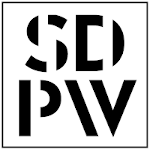Wykaz obszarów badawczych związanych z tagiem Modelowanie:
| # | Obszar badawczy | Dziedzina naukowa |
|---|---|---|
| 1 |
Design of logistic facilities (warehouses, logistic and distribution centres, transshipment terminals, intermodal terminals, industrial plants, etc.); shaping, optimization, rationalization, streamlining, modelling of logistic processes, internal transport and storage processes; implementation and evaluation of new technologies in intralogistics and logistics; modelling and optimization of intralogistic processes (order picking, co-packing, packing, storage, transshipment, etc.), application of mathematical and simulation modelling tools; application of mathematical and simulation modelling tools in logistics; construction of simulation models and conducting simulation studies (e.g. using the FlexSim tool); digital twin; digital shadow; IoT - Internet of Things
|
|
| 2 |
Data analysis systems in various aspects: applications, modeling and implementation, the use of machine learning and artificial intelligence, SQL and NoSQL databases, structured and unstructured data, Big Data, optimization, visualization and understanding of data, data context and environment, efficient methods of collecting and processing data
|
|
| 3 |
eksploatacja pojazdów, trakcja elektryczna, transport, pojazdy szynowe, badanie ruchu, modelowanie
|
|
| 4 |
Using deep machine learning to segment and classify landforms on Mars. The research will use satellite imagery and imagery from different generations of Mars rovers. The result of the work will be the development of a methodology for multi-resolution classification of geomorphological formations on Mars.
|
|
| 5 |
Alternative solvents (ionic liquids, deep eutectic solvents) - physico-chemial & thermodynamic properties, modeling and computer-aided molecular design with a variety of methods (empirical correlations, thermodynamic equations of state, hybric method (thermodynamics + quantum chemistry, COSMO-RS)
|
|
| 6 |
photoacoustics - modeling, designing and measuring the properties of elements of photoacoustic devices, in particular photoacoustic cells as well as whole photoacoustic instruments; electronics - modeling, designing and measuring the properties of electronic circuits, usually at the boundary of analog, digital and mixed circuits
|
|
| 7 |
sterowanie ruchem lotniczym, inżynieria transportu lotniczego, modelowanie procesów ruchu lotniczego, ocena procesów ruchu lotniczego, transport, modelowanie
|
|
| 8 |
The research area is focused on non-conventional manufacturing technologies, including modeling of the electrical discharge machining, application of artificial intelligence in the optimization of EDM processes, additive manufacturing, optimization of SLS/SLM process, hybrid erosive-abrasive machining, finishing technologies, i.e., abrasive flow machining, magnetic-abrasive finishing, grinding.
|
|
| 9 |
Lighting of means of transport and transport infrastructure. Modeling and simulation of optical-lighting systems. Design of innovative lighting systems of the public transport infrastructure. Energy efficiency of lighting. Light pollution. Impact of lighting on humans. Studies of the state of the means of transport lighting and lighting infrastructure. Issues of lighting in Smart City.
|
|
| 10 |
Smart materials are structures whose physical properties can be changed by an external factor. Examples of this type of material are piezoelectrics, rheological liquids or Vacuum Packed Particles, which are the main scientific interest of my team. VPP are structures made of loose granular material, closed in a tight space in which the so-called underpressure. The change in internal pressure causes macroscopic changes in the physical properties of the structures, which allows them to be included in the so-called "smart" materials. The work carried out focuses on the use of this type of structures in the semi-active damping of vibrations and noise. Other works concern modeling the behavior of non-classical materials (magnetorheological fluids, solid rocket fuels, granular composites). The potential subject of research may also include the areas of broadly understood modeling of adaptronic systems, modeling of dynamic processes with the use of FEM and DEM.
|
|
| 11 |
dynamika pojazdów, dynamika układów dyskretnych, modelowanie i analiza w ujęciu numerycznym, modelowanie i analiza przejść tor prosty - łuk kołowy, transport kolejowy, transport, modelowanie
|
|
| 12 |
Modeling, control, and simulation of complex systems (ICT, financial engineering, medicine, water resources, etc.), computer decision support systems, recommendation systems, wireless sensor networks, mobile ad hoc networks, optimal resource allocation in data networks and computing centers, parallel and distributed programming, global optimization algorithms, machine learning and Big Data processing, blockchain technologies, cyber security.
|
|
| 13 |
The power system must maintain a balance between demand and supply of electricity at all times. In most solutions used around the world, this balance is achieved by using various types of market systems. However, due to changes in the way electricity is produced and consumed, these systems are undergoing a kind of evolution. One of the key problems is to ensure stable operation of the system in the sense of its ongoing power balancing. Although many market tools have already been developed to support the transmission system operator in this task, new concepts are still being sought to minimize energy costs for the end user or the economy as a whole. The aim of the research is to develop new market models using optimization methods (e.g. computational intelligence methods) based on forecasts in various time horizons.
|
|
| 14 |
Forecasting and estimating the condition of power grids. Optimization in the power industry. Research on new forecasting methods resistant to data deficit.
|
